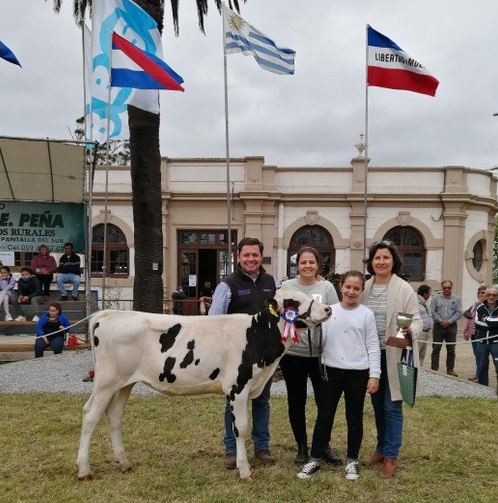Uruguay is well-known worldwide for its (fantastic) beef, and if you follow us on social media (Twitter and LinkedIn), you’ll know that the (relatively) small South American nation (where we’re proud to be based) also punches above its weight in other produce such as citrus, rice, soybean, soybean, wool, and dairy. We have covered some of these sub-sectors before (see for example our articles on cattle and sheep) as well as non-traditional sectors such as medical cannabis. So let’s focus on dairy today, given that CERES, a well-respected national think-thank, has recently published an insightful report for the Sociedad de Productores de Leche de Florida (Florida is one of the main dairy regions of Uruguay). We have summarised some key findings that we see relevant for our clients and colleagues (from the UK, New Zealand, Ireland and the US, mainly) who export products and solutions for the dairy sector globally.

– Uruguayans consume on average 230 litres per capita of dairy per year, double the global average.
– The price and margins of pasteurised milk is heavily regulated in Uruguay. However, there is plenty of flexibility for the whole chain to fix prices for other dairy products.
– Uruguay exports 75% of its dairy production. Powdered milk represents 73% of those exports (mainly whole powdered milk).
– Main export destinations are Algeria, China and Brazil (roughly 20% each).
– Conaprole, a national cooperative, is the largest dairy producer and exporter, accounting for 70% of all dairy exports. If we add Estancias del Lago and Alimentos Fray Bentos, we have 94% of exports accounted for.
– The rest of producers in the country tend to be much smaller and often lack financial capacity to investment in capital equipment (for example, to manufacture powdered milk). Nearly half of the land dedicated to dairy farming is rented, and rents are calculated in relation to grain prices, so the costs of production are highly variable – clearly, incentives for technological investment in that context are low, and exchange rate fluctuations don’t help either.
– Uruguayan dairy production is one of the most sustainable and environmentally-friendly in the world, only second to New Zealand for its carbon footprint.
Some tips for doing business in the dairy sector in Uruguay:
– At production level, the sector is highly fragmented. Small and medium size farmers tend to lack the incentives to invest in technology to increase productivity. There are very few large farms, less than a handful, and reaching those decision makers is difficult, takes time, and you only get one shot. You must be offering them something unique that fits well with their production system, and that they haven’t sourced somewhere else already. It’s a highly competitive market and you must research it well in order to have the perfect pitch ready at the right time for the right person.
– Remember that dairy farming in Uruguay is mostly “free range”, animals are rarely enclosed, so solutions that apply to indoor farms rarely apply to the Uruguayan reality.
– At industrial level, Conaprole is by far the largest player, with very few medium-size companies (very few of which export) and a plethora of small, artisan processors.
– The top end of the dairy industry in Uruguay is globally-minded and used to working with the best technology from countries such as New Zealand, Ireland, Holland and the US. It’s not easy to stand out unless you can offer cutting-edge technology already proven and tested. Local buyers will favour established companies above start-ups. Case studies from those countries, seen as their global competitors, rather than regional case studies that they often can’t relate to, are preferable when planning your marketing efforts.
– As we always discuss, make sure you can solve the problems that exist here, rather than imposing solutions to problems that the local dairy industry doesn’t see as such. And when you do, make sure you understand production systems, barriers, limitations, even culture, sufficiently enough.
